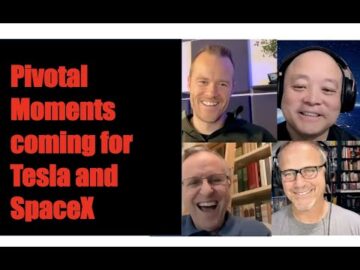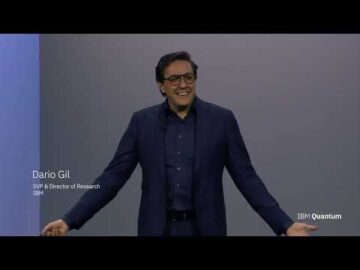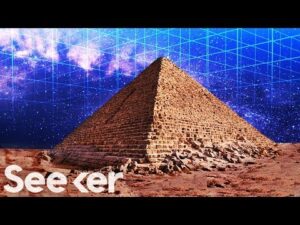Quantum chemistry is very hard. The best quantum computing chemistry seems to be at the level of 12 qubits / 12 atoms. Supercomputer simulations can handle 20 qubits and 20 atoms simulation. There are early papers that suggest classical supercomputers can get to 100 atoms and 1000 qubit for some types of simulation. Quantum computers are pushing up to 35 high fidelity trapped ion and there is work to achieve superior error mitigation and error suppression and eventual error correction with quantum computers. Breakthroughs in algorithms for supercomputers and for quantum systems are continuing and there are many competitors with different quantum technologies looking to make breakthroughs to scale to thousands and millions of qubits and to develop superior and more efficient error management.
There was a paper in 2022 where quantum simulations on the Sunway supercomputer was performed. At the current stage, classical simulation of quantum computation is crucial for the study of quantum algorithms and quantum computing architectures, especially for heuristic quantum algorithms as VQE. The largest VQE experiment performed on a quantum computer up to date has used 12 qubits. An industrially relevant quantum computational advantage in quantum chemistry is expected to appear at around 38 ≤ N ≤ 68 qubits (under the assumption of error-corrected qubits), which is related to an electronic structure problem including
19 ≤ N ≤ 34 electrons.
Compared to RQC (Random Quantum Circuits), VQE (variational quantum eigensolver) is much more demanding for both quantum and classical computers, for example, the number of CNOT gates involved in a typical quantum computational chemistry simulation quickly goes beyond 1 million with commonly used physically motivated ansatz such as unitary coupled-cluster (UCC). Moreover, the parametric quantum circuit has to be executed many times as is typical for variational algorithms. These effects limit most of the current investigations of VQE using classical computers to very small problems (less than 20 qubits). Unleashing the Julia programming language on Sunway architectures and running it efficiently over 20 million cores is also an extremely challenging task. The 2022 work has set the standard for large-scale classical simulation of quantum computational chemistry, and paves the way for benchmarking VQE applications on near-term noisy quantum computers.
Q2 Chemistry is suitable for large-scale simulation of quantum computational chemistry, based on a combination of the Density Matrix Embedding Theory and the Matrix Product States to reduce the exponentially memory scaling against the system size; a customized three-level parallelization scheme has been implemented according to the nature of the physical problem and the many-core architecture; Julia is used as the primary language which both makes programming easier and enables cutting edge performance close to native C or Fortran; Real chemical systems have been studied to demonstrate the power of Q2Chemistry in computational quantification of proteinligand interactions. To the best of their knowledge, this is the first reported quantum computational chemistry simulation
calculation for real chemical system with as many as 100 atoms and 1000 qubits using DMET-MPS-VQE (and 200 qubits using MPS-VQE), and scales to around 20 million cores. This paves the way for benchmarking with near term
VQE experiments on quantum computers with around 100 qubits.
A new study shows that for problems of real-world interest, such as calculating the energy states of a cluster of atoms, quantum simulations are not yet more accurate than those of classical computers.
The study results show how close quantum computers are to becoming useful atomic and molecular simulation tools for chemists and materials scientists.
Garnet Chan of the California Institute of Technology and his co-workers performed simulations of a molecule and a material using a 53-qubit Google processor called Weber, based on Sycamore.
The team selected two problems of current interest, without any consideration of how well suited they might be to a quantum circuit. The first involves calculating the energy states of an 8-atom cluster of iron (Fe) and sulfur (S) found in the catalytic core of the enzyme nitrogenase. This enzyme breaks strong bonds in nitrogen molecules as the first step in an important biological process called nitrogen fixation. Understanding the chemistry of this process could be valuable for developing artificial nitrogen-fixing catalysts for the chemical industry.
One of the key obstacles to accurate quantum simulations is noise—random errors in both the switching of the “gates” that perform quantum logic operations and in the reading of their output states. These errors accumulate and restrict the number of gate operations a computation can enact before the noise dominates. The researchers found that simulations with more than 300 gates were overwhelmed by noise. But the more complex the system, the more gates are needed. The Fe-S cluster, for example, has long-range interactions between spins; to be represented accurately, such interactions require many gates.
The simulations provided predictions for the energy spectra of the Fe-S cluster and the heat capacity of 𝛼-RuCl3 reasonably well—but only if the simulated systems were not too big. For 𝛼-RuCl3 the team could only obtain meaningful results for a very small 6-atom chunk of the crystal lattice; if they increased the size to just 10 atoms, the noise overwhelmed the output. And the constraints on gate operations meant that only about one-fifth of Weber’s quantum resources could be used for the calculation.
State of the Art Quantum Chemistry on IonQ Trapped Ion
Quantum computation has attracted significant attention for its potential to solve certain computational problems more efficiently than with classical computers, especially since IBM launched the first cloud accessible quantum computer and Google demonstrated quantum advantage. One of its most promising applications is to solve electronic structure problems efficiently: to illustrate, consider that for a problem containing N spin orbitals, the number of classical bits required to represent the wave function scales combinatorially with N, while on a quantum
computer only N qubits are needed. The exponential advantage offered by quantum computers has motivated a great deal of research in developing quantum algorithms to solve the electronic structure problem.
The variational quantum eigensolver (VQE) algorithm is designed specifically for current near-term intermediate scale quantum (NISQ) computers. VQE estimates the ground state of a system by implementing a shallow parameterized circuit, which is classically optimized to variationally minimize the energy expectation value. The VQE algorithm allows the user to select the form of the parameterized circuit.


There is a research paper from $2 billion Trapped Ion quantum computer company IonQ. They got a new record with 12 qubits and 72 parameters. If I am not mistaken the Google work with 10 atoms and qubits was surpassed by this IonQ work.

IonQ is currently testing a 35 trapped ion qubit system. Trapped ion should theoretically be able to achieve physically perfect qubits. However, there are other sources of error in the whole system.
The Sunway supercomputer work on classical machines simulating atoms and the IonQ and other quantum systems will continue to push ahead and race to simulating larger and larger physical atomic and molecular systems.
Orbital-optimized pair-correlated electron simulations on trapped-ion quantum computers
Variational quantum eigensolvers (VQE) are among the most promising approaches for solving electronic structure problems on near-term quantum computers. A critical challenge for VQE in practice is that one needs to strike a balance between the expressivity of the VQE ansatz versus the number of quantum gates required to implement the ansatz, given the reality of noisy quantum operations on near-term quantum computers. In this work, we consider an orbital-optimized pair-correlated approximation to the unitary coupled cluster with singles and doubles (uCCSD) ansatz and report a highly efficient quantum circuit implementation for trapped-ion architectures. We show that orbital optimization can recover significant additional electron correlation energy without sacrificing efficiency through measurements of low-order reduced density matrices (RDMs). In the dissociation of small molecules, the method gives qualitatively accurate predictions in the strongly-correlated regime when running on noise-free quantum simulators. On IonQ’s Harmony and Aria trapped-ion quantum computers, we run end-to-end VQE algorithms with up to 12 qubits and 72 variational parameters – the largest full VQE simulation with a correlated wave function on quantum hardware. We find that even without error mitigation techniques, the predicted relative energies across different molecular geometries are in excellentagreement with noise-free simulators.
Is there evidence of exponential quantum Advantage in Quantum chemistry.
Abstract
The idea to use quantum mechanical devices to simulate other quantum systems is commonly ascribed to Feynman. Since the original suggestion, concrete proposals have appeared for simulating molecular and materials chemistry through quantum computation, as a potential “killer application”. Indications of potential exponential quantum advantage in artificial tasks have increased interest in this application, thus, it is critical to understand the basis for potential exponential quantum advantage in quantum chemistry. Here we gather the evidence for this case in the most common task in quantum chemistry, namely, ground-state energy estimation. We conclude that evidence for such an exponential advantage across chemical space has yet to be found. While quantum computers may still prove useful for quantum chemistry, it may be prudent to assume exponential speedups are not generically available for this problem.
Researchers from Berkeley and elsewhere examined the case for the exponential quantum advantage (EQA) hypothesis for the central task of ground-state determination in quantum chemistry. The specific version of EQA that they examined required quantum state preparation to be exponentially easy compared to classical heuristics, and for classical heuristics to be exponentially hard. Their numerical simulations highlight that heuristics are necessary to achieve efficient quantum ground-state preparation. At the same time, they do not find evidence for the exponential scaling of classical heuristics in a set of relevant problems. The latter suggests that quantum state preparation can be made efficient for the same problems. However, as EQA is based on the ratio of costs, this does not lead to EQA.
Numerical calculations are not mathematical proof of asymptotics with respect to size and error, nor can they exclude EQA in specific problems. However, their results suggest that without new and fundamental insights, there may be a lack of generic EQA in this task. Identifying a relevant quantum chemical system with strong evidence of EQA remains an open question. They did not consider tasks other than ground-state determination, nor do they rule out polynomial speedups. Depending on the precise form, polynomial quantum speedups could be associated with useful quantum advantage, as even a polynomial classical algorithm does not mean that solutions can be obtained in a practical time. Both aspects may prove important in the further development of quantum algorithms in quantum chemistry.
Brian Wang is a Futurist Thought Leader and a popular Science blogger with 1 million readers per month. His blog Nextbigfuture.com is ranked #1 Science News Blog. It covers many disruptive technology and trends including Space, Robotics, Artificial Intelligence, Medicine, Anti-aging Biotechnology, and Nanotechnology.
Known for identifying cutting edge technologies, he is currently a Co-Founder of a startup and fundraiser for high potential early-stage companies. He is the Head of Research for Allocations for deep technology investments and an Angel Investor at Space Angels.
A frequent speaker at corporations, he has been a TEDx speaker, a Singularity University speaker and guest at numerous interviews for radio and podcasts. He is open to public speaking and advising engagements.









